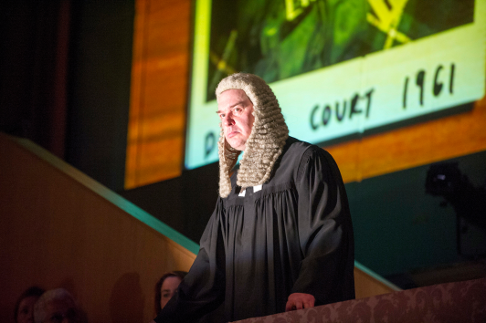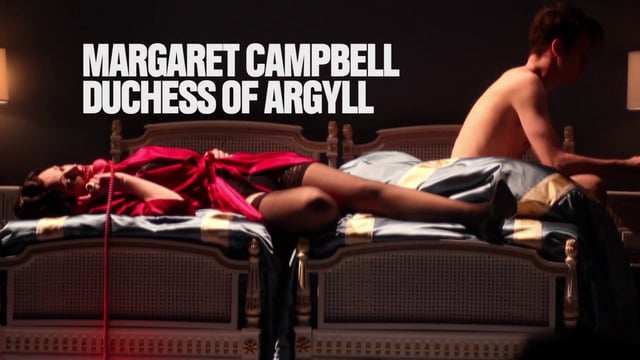Family law: ‘Injury to public morals’ – 2018 style
David Burrows considers an old scandal and an even older statute in the context of a persisting impediment on the ability of the press to print lurid accounts of the private lives of those involved in defended divorce disputes. A modern protection for public morals A flurry of tweets and blog traffic earlier this month
David Burrows considers an old scandal and an even older statute in the context of a persisting impediment on the ability of the press to print lurid accounts of the private lives of those involved in defended divorce disputes.

A modern protection for public morals
A flurry of tweets and blog traffic earlier this month caused me to look for almost the first time in my professional life at Judicial Proceedings (Regulation of Reports) Act 1926. This statute, with its single operative section, is described by the great family law academic and historian Dr Stephen Cretney as ‘an occasionally troublesome irrelevance’. Sir James Munby P, after quoting Dr Cretney, has suggested that ‘Parliament might wish to consider with an appropriate degree of urgency whether the retention of the 1926 Act on the statute book is justified’: see Rapisarda v Colladon (In the matter of 180 Irregular Divorces) [2014] EWFC 1406, [2015] 1 FLR 584 at [28].
The Act took me on to Duchess of Argyll v Duke of Argyll [1967] Ch 302, [1965] 2 WLR 790 which, like the Act, I had read of, but to which I had paid little attention. That is to my discredit. The case was an early common law affirmation of the duty of confidence implied by marriage (and, in 2018, in cohabitation as if married or civilly partnered?); and it is an important component in modern reporting restrictions orders and ‘super injunctions’. For example, in a judgement of the court (Lord Neuberger MR, Moses and Munby LJJ) in Imerman v Tchenguiz [2010] EWCA Civ 908, [2011] Fam 116, [2010] 2 FLR 814 the Court of Appeal said, at [62]:
“In Duchess of Argyll v Duke of Argyll [1967] Ch 302, 317, Ungoed-Thomas J granted the plaintiff an injunction to restrain the defendant, her former husband, from publishing: ‘secrets of the plaintiff relating to her private life, personal affairs or private conduct, communicated to the first defendant in confidence during the subsistence of his marriage to the plaintiff and not hitherto made public property.’ He said, at p 322, that: ‘the court in the exercise of its equitable jurisdiction will restrain a breach of confidence independently of any right at law.’ Later, at p 333 he added: ‘an injunction may be granted to restrain the publication of confidential information not only by the person who was a party to the confidence but by other persons into whose possession that information has improperly come.’”
With great respect to those two pre-eminent family lawyers, Cretney and Munby, it remains the case that the Argyll case and the 1926 Act (especially s 1(1)(b) considered below) are important sources of family law.
Judicial Proceedings (Regulation of Reports) Act 1926
As far as divorce and nullity (and equivalent civil partnership applications) the 1926 Act imposes limitations on the media and other publishers of printed information (but not eg users of Facebook or Twitter or other ‘social media’) which form a sub-text to more conventional open justice principles in Matrimonial Causes Act 1973 divorce etc and Civil Partnership Act 2004 proceedings.
Generally speaking, a defended divorce must be in open court (Family Procedure Rules 2010 (FPR), r 7.16(1)). An open court hearing means the press is entitled to ask for – and generally to receive documents referred to in court (see eg R (Guardian News and Media Ltd) v City of Westminster Magistrates’ Court (Article 19 intervening) [2012] EWCA Civ 420, [2013] QB 618, [2012] 3 WLR 1343; NAB v Serco Ltd [2014] EWHC 1225 (QB), Bean J; and see https://www.iclr.co.uk/archive/family-law-no-island-2-release-family-courts-hearing-documents/) That might include lurid statements of the matrimonial life of any ‘celebrity’ – what exactly does that word mean? – who is unwise enough to defend his or her divorce.
The aim of the 1926 Act is set out in its long title. It is intended to be ‘An Act to regulate the publication of reports of judicial proceedings in such manner as to prevent injury to public morals’. Anyone in the group intended to be caught by it – mostly the broadcast and press media (see s 1(2)) – can be prosecuted, if the Attorney-General agrees (s 1(3)).
The fact of there being criminal liability in all this indirectly creates the ability for the court to impose what have become known often as ‘super injunctions’ in family proceedings. Mr Justice Ungoed-Thomas explained this in the Argyll case.
Duchess of Argyll: reporting restriction injunctions in 2018
The case concerned a breach of confidentiality injunction (a form of reporting restrictions order or ‘super injunction’; and see references in eg Attorney-General v Guardian Newspapers Ltd (No 2) [1988] UKHL 6, [1990] 1 AC 109, [1987] WLR 776 (the Spycatcher case) which is often cited as a modern definition of confidentiality).

Following an eight-year marriage the Duke of Argyll presented an adultery divorce petition in Scotland. The Scottish judge, Lord Wheatley, acidly commented on the Duchess that her attitude to the sanctity of marriage was “what the moderns might call sophisticated but what in plain language can only be described as wholly immoral” (quoted by Ungoed-Thomas [1967] Ch 302 at 331). Thus a view from the Scottish bench in 1963 (the year in which Lady Chatterley’s Lover was prosecuted – unsuccessfully – as allegedly obscene).
The Duke was granted a decree. In the same year, newspaper articles by the Duchess appeared, concerning the Duke’s drug habit, and that he had borrowed money to do up property from the Duchess’s family. Of these Ungoed-Thomas J commented: “though not free from objection [the Duchess’s articles leave] on my mind a more sympathetic and favourable impression of the Duke than do his own articles” and his descriptions of her and their private life.
The Duchess sought interlocutory injunctions to restrain the Duke from communicating to the press information about her private life, personal affairs or private conduct during the subsistence of their marriage not hitherto made public. She claimed in respect of the Scottish proceedings under s 1(1)(b), and that publication of statements about her were in breach of marital confidence. Of those confidences she said in a statement read out by Ungoed-Thomas J at 318:
“During a number of years before our marriage began to deteriorate, my ex-husband and I had a very close and intimate relationship in which we freely discussed with each other many things of an entirely private nature concerning our attitudes, our feelings, our hopes, aspirations and foibles, our past lives and previous marriages, our business and private affairs, and many other things which one would never have discussed with anyone else. Apart from explicit discussion, we naturally discovered many things about each other which, but for our close relationship, we would not have done. These things were talked about and done on the implicit understanding that they were our secrets and that we allowed the other one to discover them only because of the complete trust and mutual loyalty which obtained between us and created an absolute obligation of confidence.”
The marriage and the type of relationship described by the judge, created between the couple an implication of confidence which the law and equity must respect; and which could be protected by a reporting restrictions injunction. What the judge said of marital confidences remains important at common law and in equity today (see eg Imerman v Tchenguiz, above).
To ‘print or publish, or procure to be printed or published’ divorce case details
As noted above, the long title to the 1926 Act states that it is: “An Act to regulate the publication of reports of judicial proceedings in such manner as to prevent injury to public morals”. The Act consists of one operative section. Section 1(1) creates two separate sources of restriction on publicity by media and print. One depends on injury to public morals (s 1(1)) and is likely to be in Dr Cretney’s ‘irrelevance’ category.
Section 1(1)(b) is the meat of what remains of the Act and bears setting out in full (as amended):
“(1) It shall not be lawful to print or publish, or cause or procure to be printed or published:..
(b) in relation to any judicial proceedings for dissolution of marriage, for nullity of marriage, or for judicial separation, or for the dissolution or annulment of a civil partnership or for the separation of civil partners, any particulars other than the following, that is to say:—
(i) the names, addresses and occupations of the parties and witnesses;
(ii) a concise statement of the charges, defences and countercharges in support of which evidence has been given;
(iii) submissions on any point of law arising in the course of the proceedings, and the decision of the court thereon;
(iv) the summing-up of the judge and the finding of the jury (if any) and the judgment of the court and observations made by the judge in giving judgment:…”
Thus all but the prescribed information in s 1(1)(b) is not to be published; and that is regardless of whether or not publication of other information might cause “injury to public morals” (as is confirmed by Rapisarda v Colladon (In the matter of 180 Irregular Divorces) (above)). It as if in drafting s 1(1)(b) the drafter had altogether forgotten the Act’s long title.
For the day-to-day defended divorce – relatively few of these though there may be – s 1(1)(b) makes it unlawful to publish any but the prescribed information. This is so, even though the hearing is in open court (see Scott v Scott [1913] UKHL 2, [1913] AC 417 and the discussion of its significance in “To be heard in the dining hall…”: Scott 100 years on). Scott v Scott (which still lays the modern foundation for all proceedings being in public) was a nullity case. FPR r 7.16, already mentioned, says that a divorce etc hearing – especially a defended divorce hearing – must be in public. So the press and public are allowed in; but only the details in s 1(1)(b) can be reported by the press.
Despite defended divorces being in open court – when that would normally mean that all that was said, and all documents read in court or referred to could be published – s 1(1)(b) puts a clear statutory brake on such publication. That means the media can only publish and print with care; and in the terms of the information set out in Judicial Proceedings (Regulation of Reports) Act 1926, s 1(1)(b).
Law reports – injury to public morals et al
And what of mine host, ICLR? “Bona fide” law reporters, though they operate in a printed medium, are exempt from the rigours of s 1(1):
“(4) Nothing in this section shall apply to… the printing or publishing of any matter in any separate volume or part of any bonâ fide series of law reports which does not form part of any other publication and consists solely of reports of proceedings in courts of law, or in any publication of a technical character bonâ fide intended for circulation among members of the legal or medical professions.”
Thus the extensive quotes from the evidence in the judgment in Owens v Owens [2017] EWCA Civ 182, [2017] 4 WLR 74 (and see Family law: Mrs Owens – a divorce in 2017 ) – which, but for s 1(4), might have caught the law reporter in the snare of the 1926 Act – leaves him or her in the clear. And, as I read s 1(4), the hell with “injury to public morals” and s 1(1)(a). ICLR can publish without fear of damnation from that source. It has the clear edge there over The Sun and The Daily Mail in publication – in the unlikely event of a lurid open court divorce – of its press and print rivals….

The featured images, chosen by the editor, are taken from material promoting Powder Her Face, an opera by Thomas Adès, with libretto by Philip Hensher, which is all about the Duchess of Argyll, her private life, and her infamous divorce. (The first is from Odyssey Opera in Boston, Mass; the second from an English National Opera production discussed in Opera Today; the third from a New York City Opera production ‘teaser’.)